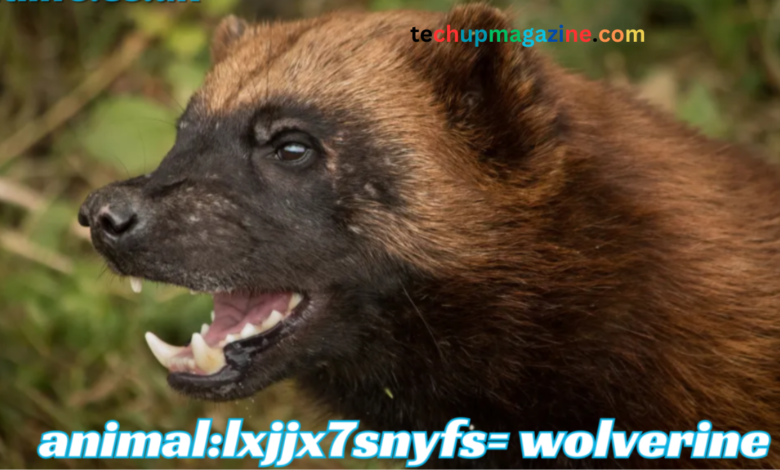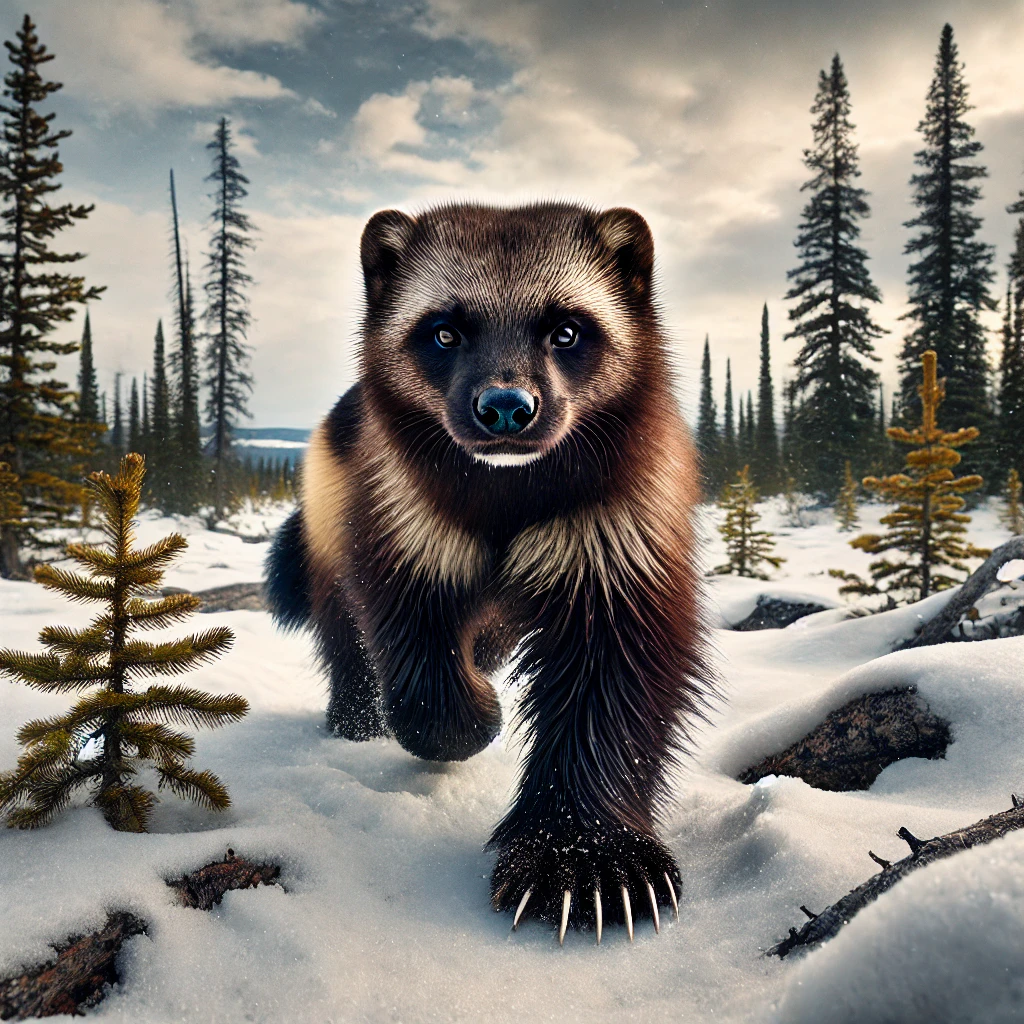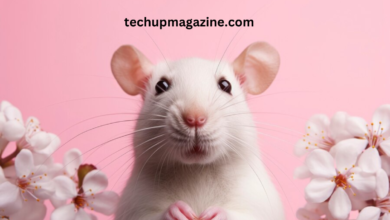animal:lxjjx7snyfs= wolverine: The Fearless and Tenacious Animal

animal:lxjjx7snyfs= wolverine The wolverine, a fierce and elusive creature, holds a unique place in the animal kingdom. Known for its incredible strength, stamina, and tenacity, the wolverine has captivated the imagination of people for centuries. Though often misunderstood, this animal commands respect in the wild due to its resilience and adaptability. Found primarily in remote and cold regions, the wolverine is a solitary hunter, showcasing traits that seem larger than life for its size animal:lxjjx7snyfs= wolverine.
In this article, we will explore various aspects of the wolverine, from its physical characteristics and habitat to its behavior and role in popular culture. By the end, you’ll have a deeper appreciation for this formidable creature and understand why it holds such a unique place in the ecosystem animal:lxjjx7snyfs= wolverine.
The Physical Characteristics of the Wolverine

animal:lxjjx7snyfs= wolverine are medium-sized animals that belong to the weasel family, Mustelidae. Despite their relatively small size, these animals are incredibly powerful, earning them the nickname “the strongest animal for its size.” Wolverines typically weigh between 20 and 55 pounds, with males being larger than females. Their bodies are compact, with short legs and a broad head, all designed to withstand the harsh environments they live in animal:lxjjx7snyfs= wolverine.
The wolverine’s coat is another remarkable feature. It consists of dense, oily fur that is highly resistant to frost and water, making it perfectly suited for cold climates. Their fur ranges from dark brown to black, with lighter markings that sometimes form a mask-like appearance around their face. This thick coat helps them stay warm during long winters, allowing them to thrive in some of the harshest terrains on the planet animal:lxjjx7snyfs= wolverine.
Another notable physical trait of wolverines is their claws. These claws are long, sharp, and curved, making them perfect for digging through snow and ice, as well as climbing trees. Wolverines also have strong jaws, which enable them to crush bones and eat almost every part of their prey, including bones, cartilage, and hooves. These adaptations make the wolverine an apex scavenger in its environment animal:lxjjx7snyfs= wolverine.
The Wolverine’s Habitat and Range
Wolverines are primarily found in the northern parts of North America, Europe, and Asia, especially in areas that are cold and mountainous. Their preferred habitats include boreal forests, tundra regions, and alpine areas, where the temperature remains low throughout the year. This allows them to take advantage of their thick fur and physical adaptations that help them survive in frigid conditions animal:lxjjx7snyfs= wolverine.
In North America, wolverines are most commonly found in Canada, Alaska, and the northern United States. In Europe, their populations are concentrated in Scandinavia and Russia, while in Asia, they inhabit parts of Siberia. These remote and rugged regions provide wolverines with the space they need to roam and hunt without significant human interference animal:lxjjx7snyfs= wolverine.
Wolverines are solitary animals with large territories. A single wolverine may range over an area of up to 240 square miles, depending on food availability and environmental conditions. Because they cover such vast distances, wolverines are skilled at moving across diverse landscapes, from snow-covered mountains to dense forests. Their incredible stamina allows them to travel long distances in search of food, often crossing inhospitable terrain with ease animal:lxjjx7snyfs= wolverine.
The Wolverine’s Diet: A Fierce Scavenger and Predator
Wolverines are primarily scavengers, but they are also skilled hunters when necessary. Their diet consists mainly of carrion—dead animals that they find during their travels. Wolverines are not picky eaters, and they will consume a wide variety of animals, including deer, elk, moose, and smaller mammals like rabbits or rodents. When food is scarce, wolverines will even eat birds, eggs, and vegetation animal:lxjjx7snyfs= wolverine.
One of the most fascinating aspects of the wolverine’s diet is its ability to take down animals much larger than itself. Although not their primary hunting strategy, wolverines have been known to attack and kill prey like caribou and elk, especially if the animal is weakened by injury or deep snow. Wolverines use their powerful jaws and sharp claws to overpower their prey, demonstrating a level of ferocity that belies their small size animal:lxjjx7snyfs= wolverine.
Wolverines also exhibit a behavior known as “caching,” where they store food for later consumption. This is particularly useful in winter months when food can be scarce. Wolverines will bury their food in the snow or store it in trees, using their keen sense of smell to locate it later. This survival tactic ensures that they have a steady food supply during harsh winters when hunting opportunities may be limited animal:lxjjx7snyfs= wolverine.
The Behavior of Wolverines: Solitary and Tenacious
Wolverines are known for their solitary nature. Unlike many other animals, wolverines do not form packs or groups. Instead, they live alone, with the exception of mothers raising their young. Wolverines are highly territorial and will fiercely defend their range from other wolverines, marking their territory with scent glands to ward off intruders animal:lxjjx7snyfs= wolverine.
One of the key traits that define the wolverine is its tenacity. These animals are relentless when it comes to hunting or defending their food. They have been observed challenging larger predators like wolves and bears, fighting them off to claim a carcass. Despite their smaller size, wolverines do not back down easily and have earned a reputation for being fearless in the face of danger animal:lxjjx7snyfs= wolverine.
During the winter months, wolverines become even more active, using the snow to their advantage. Their large paws allow them to walk on snow without sinking, giving them a significant advantage over other animals. They can travel long distances in search of food, often moving across the snow at incredible speeds. Wolverines are also excellent climbers and swimmers, making them one of the most versatile predators in the wild animal:lxjjx7snyfs= wolverine.
Wolverine Reproduction and Life Cycle
The breeding season for wolverines typically occurs during the summer months, but the process of reproduction is unique. After mating, female wolverines experience delayed implantation, meaning that the fertilized egg does not immediately develop into an embryo. This allows the mother to time the birth of her young with favorable environmental conditions, usually in late winter or early spring.
Female wolverines give birth to a small litter of one to three kits, usually in a den located in a snowbank or under a fallen tree. These dens provide protection from the elements and predators. The kits are born blind and helpless, relying on their mother for warmth and nourishment. As they grow, they develop rapidly and begin to explore their surroundings within a few months animal:lxjjx7snyfs= wolverine.
Wolverine kits stay with their mother for about a year before venturing out on their own. During this time, the mother teaches them how to hunt and survive in the wild. By the time they are one year old, the young wolverines are fully independent and capable of establishing their own territories animal:lxjjx7snyfs= wolverine.
The Role of Wolverines in the Ecosystem
Wolverines play an important role in maintaining the balance of their ecosystem. As scavengers, they help clean up the environment by consuming carrion, preventing the spread of disease and helping to recycle nutrients back into the ecosystem. Their role as predators also helps control populations of smaller mammals and other prey species animal:lxjjx7snyfs= wolverine.
Additionally, wolverines help maintain the health of prey populations by targeting sick or injured animals. This natural form of population control ensures that only the strongest and healthiest individuals survive, promoting the overall health of the species they prey upon animal:lxjjx7snyfs= wolverine.
Wolverines are also considered “keystone species” in some ecosystems, meaning that their presence has a disproportionate impact on the environment compared to their population size. Because they cover such large territories and have varied diets, wolverines influence many aspects of the ecosystem, from predator-prey dynamics to nutrient cycling animal:lxjjx7snyfs= wolverine.
Wolverine Conservation: Challenges and Efforts
Despite their fearsome reputation, wolverines face several threats to their survival. Habitat loss due to human activities like logging, mining, and infrastructure development is one of the biggest challenges they face. As remote wilderness areas become more fragmented, wolverines have fewer places to roam and hunt, which can lead to population declines.
Climate change is another significant threat to wolverines, particularly in regions where snow cover is essential for their survival. Wolverines rely on deep snow for building dens and storing food, and as temperatures rise, the availability of snow in some areas may decrease. This could have a profound impact on wolverine populations in the future.
In response to these challenges, several conservation efforts are underway to protect wolverines and their habitats. In North America, wolverines are listed as a species of concern, and some areas have implemented protections to prevent habitat destruction. Conservationists are also working to raise awareness about the importance of preserving remote wilderness areas, which are critical to the survival of species like the wolverine.
The Wolverine in Popular Culture
The wolverine’s reputation for strength and tenacity has made it a popular symbol in various cultures. In Native American folklore, the wolverine is often portrayed as a trickster or a symbol of perseverance. Its ability to survive in harsh conditions and its fearless nature have made it a creature to be both respected and admired.
In modern popular culture, the wolverine is perhaps best known as the namesake of a famous comic book character. The Marvel Comics character “Wolverine” shares many traits with the animal, including strength, resilience, and a fierce, solitary nature. This character has helped raise awareness of the animal, even if the fictional version is a far cry from the real-life wolverine.
Wolverines also appear in various sports team names, particularly in North America, where they are seen as symbols of toughness and endurance. The University of Michigan’s athletic teams, for example, are known as the Wolverines, reflecting the animal’s qualities of strength and perseverance.
The Future of Wolverines: A Species to Watch
As we look to the future, the fate of the wolverine remains uncertain. While they are not currently considered endangered, their populations are vulnerable to the effects of habitat loss and climate change. Continued conservation efforts will be essential to ensuring that wolverines have the space and resources they need to thrive in the wild.
One of the key challenges in wolverine conservation is the lack of detailed population data. Because wolverines are so elusive and live in remote areas, it is difficult for scientists to accurately assess their numbers and health. However, ongoing research efforts, including tracking and monitoring programs, are helping to fill in these gaps and provide valuable insights into wolverine populations.
In conclusion, the wolverine is a remarkable animal that embodies strength, resilience, and adaptability. Its ability to survive in some of the harshest environments on Earth, combined with its fierce nature, makes it a creature worthy of admiration. As we continue to learn more about wolverines and their role in the ecosystem, it is clear that they are a vital part of the natural world and deserve our efforts to protect them for future generations.

